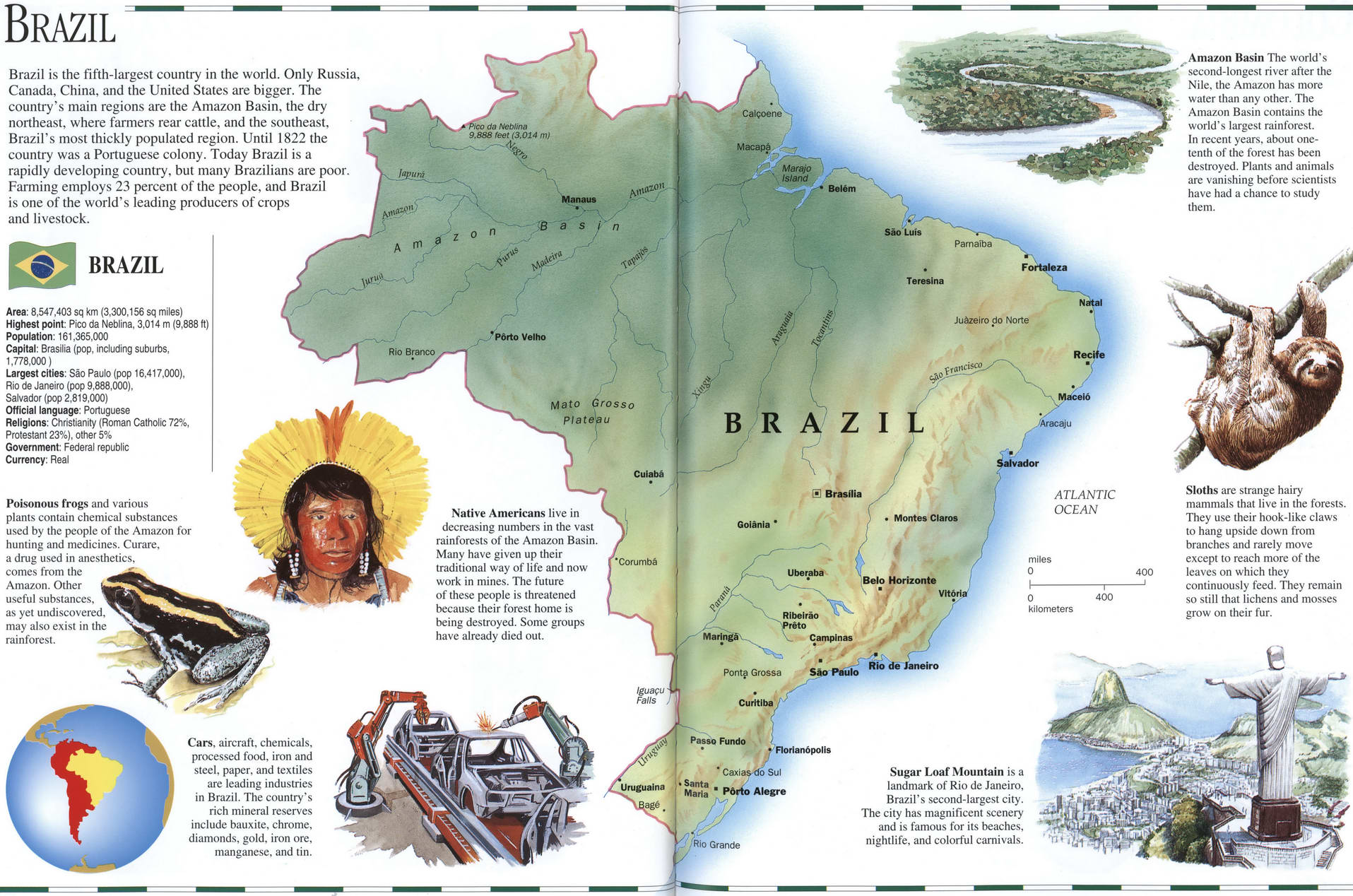Brazil detailed geographic map
Geography map of Brazil
Map of Brazil, with a brief geographical and historical information
about the country. Large easy to read map of Brazil with the historical
and geographical facts about Brazil's largest largest country in South
America.

Brazil highlights
Brazil is the fifth-largest country in the world. Only Russia, Canada, China, and the United States are bigger. The country's main regions are the Amazon Basin, the dry northeast, where farmers rear cattle, and the southeast, Brazil's most thickly populated region. Until 1822 the country was a Portuguese colony. Today Brazil is a rapidly developing country, but many Brazilians are poor. Farming employs 23 percent of the people, and Brazil is one of the world's leading producers of crops and livestock.
Geographical description of Brazil
Area: 8,547,403 sq km (3,300.156 sq miles)
Highest point: Pico da Neblina, 3,014 m (9,888 ft)
Population: 161,365,000
Capital: Brasilia (pop, including suburbs,1,778.000)
Largest cities: Sao Paulo (pop 16,417,000), Rio de Janeiro (pop 9,888.000), Salvador (pop 2,819,000) Official language: Portuguese Religions: Christianity (Roman Catholic 72%, Protestant 23%). other 5% Government: Federal republic Currency: Real
Poisonous frogs and various plants contain chemical substances used by the people of the Amazon for hunting and medicines. Curare, a drug used in anesthetics, comes from the Amazon. Other useful substances, as yet undiscovered, may also exist in the rainforest.
Native Americans live in decreasing numbers in the vast rainforests of the Amazon Basin. Many have given up their traditional way of life and now work in mines. The future of these people is threatened because their forest home is being destroyed. Some groups have already died out.
Corumba Cars, aircraft, chemicals, processed food, iron and steel, paper, and textiles are leading industries in Brazil. The country's rich mineral reserves include bauxite, chrome, diamonds, gold, iron ore, manganese, and tin.
Amazon Basin The world's second-longest river after the Nile, the Amazon has more water than any other. The Amazon Basin contains the world's largest rainforest. In recent years, about one-tenth of the forest has been destroyed. Plants and animals are vanishing before scientists have had a chance to study them.
Sloths are strange hairy mammals that live in the forests. They use their hook-like claws to hang upside down from branches and rarely move except to reach more of the leaves on which they continuously feed. They remain so still that lichens and mosses grow on their fur.
Sugar Loaf Mountain is a landmark of Rio de Janeiro, Brazil's second-largest city. The city has magnificent scenery and is famous for its beaches, nightlife, and colorful carnivals.
